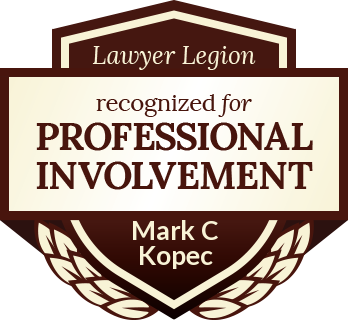CQE Diagnosis: Canton Harbor v. Robinson 2
The Baltimore Medical Malpractice Lawyer Blog discusses Maryland appellate opinions in medical malpractice cases. This post delves into a significant Maryland medical malpractice case, exploring the ability of a registered nurse to sign a Certificate of Qualified Expert (CQE) on the issue of proximate cause involving a diagnosis. The case is the Supreme Court of Maryland’s reported opinions on July 29, 2025, in Canton Harbor Healthcare Center, Inc. v. Robinson, No. 22.
Factual Background on Diagnosis in Nurse CQE
Unless the sole claim is lack of informed consent, a plaintiff in a Maryland medical malpractice case must submit a Certificate of Qualified Expert (CQE) attesting to a departure from the standard of care that proximately caused injury. Md. Code Ann. CJP 3-2A-04-(b)(1)(i)1. The issue in this case was whether a registered nurse may sign the CQE in a claim against a skilled nursing facility for allowing a patient to develop pressure ulcers. (Op. at 1).
Following a stroke, the patient went to the defendant skilled nursing facility. While there, the patient developed pressure ulcers, also called decubitus ulcers or bedsores. The patient went to other facilities where his pressure ulcers worsened, and he became septic and subsequently died. (Id. at 1, 8).
The plaintiffs were the decedent’s wife and children. They filed a complaint in the Circuit Court for Baltimore City. They contended that the defendant’s negligence caused the pressure ulcers to develop, spread, and then become infected, ultimately causing the wrongful death. (Id.).
The plaintiffs also submitted a CQE signed by a registered nurse. The circuit court granted the defendant’s motion to dismiss, holding that the registered nurse could not sign the CQE. The Appellate Court of Maryland reversed. You can read a Blog post on its opinion: Robinson v. Canton 1. The defendant then appealed. (Id. at 2).

Supreme Court of Maryland on Diagnosis in Nurse CQE
The medical provider signing the CQE shall have had clinical experience, provided consultation relating to clinical practice, or taught medicine in the defendant’s specialty or a related field of health care, or in the field of health care in which the defendant provided care or treatment to the plaintiff, within 5 years of the date of the negligent act. CJP § 3-2A-02(c)(2)(ii)1.
The registered nurse’s CQE stated that she was familiar with the standards of care for treatment of patients in circumstances like the deceased ‘s. She also attached a 19-page report. The patient was unable to move or communicate, relying on the nursing staff to turn and reposition him. (Id. at 9).
The nurse documented failure to prevent friction or shearing; inadequate use of Barrier Cream (Id. at 11); and failure to provide supplements for wound healing. The nurse opined that the defendant breached the standard of care, its policies and procedures, and also state and federal regulations. (Id. at 12).
In opposing the motion to dismiss, the nurse submitted an affidavit stating she had been a nurse for 16 years, and she routinely performed skin evaluations, identified and classified pressure ulcers, and proposed treatments. She specifically had done this for over 500 patients and had routinely diagnosed the cause of pressure ulcers. (Id. at 16).
At the circuit court, the plaintiffs abandoned the wrongful death claim, and afterward, the wife continued as plaintiff for the survival claim. (Id.).
Analysis
The Supreme Court’s conclusion in this case has significant implications, affirming that a nurse may sign a CQE that a breach of standards of nursing care caused the pressure ulcer, provided that the opinion consists of a nursing diagnosis and not medical causation. In its analysis, the Supreme Court emphasized that the nurse was accepting a medical diagnosis made by another health care provider. (Id. at 23).
The court discussed state and federal regulations and concluded that the identification, prevention, and treatment of pressure ulcers “fall comfortably” within the scope of nursing care. The court further stated that it is an open question whether identifying the proximate cause of a pressure ulcer is within a nursing diagnosis or a medical diagnosis and quoted the Appellate Court of Maryland’s opinion in this case, concluding that it is a nursing diagnosis. (Id. at 27).
The Supreme Court also discussed the peer-to-peer requirement of the CQE statute, which requires certain experience in the defendant’s specialty or related field. CJP § 3-2A-02(c)(2)(ii)1A. The defendant argued that the nurse had improperly attested to a physician’s failure to meet the standards of care. The Supreme Court confirmed that the nurse could not do that. (Id. at 29-30).
Challenge to Trial Testimony
Before concluding, the Supreme Court stated that it reviewed the medical literature. It concluded that it is possible that some pressure ulcers can be diagnosed by a nursing diagnosis, and a medical diagnosis would not be necessary. The nurse’s CQE in this case avers that a medical diagnosis is not necessary in this case. The defense can raise a Daubert-Rochkind challenge to the nurse’s qualifications or opinions, including the dissent’s argument that the opinions were ipse dixit, or “because I say so.” However, these arguments go to the nurse’s testimony at trial do not invalidate the CQE. (Id. at 35 n. 25).
The Supreme Court’s decision was a plurality opinion that three justices joined in. A fourth justice wrote a concurring opinion.
Concurrence
The concurrence noted that the CQE requirement does not determine the admissibility of expert testimony at trial. (Conc. at 3). The statute is not limited to doctors and does not state that the signer must be qualified to make a specific type of diagnosis. The basic criteria relate to experience and amount of time involved in personal injury litigation (set forth above), and also similarity of training, experience, and community (“locality” requirement). (Id. at 3-4).
The concurrence noted that the statute requires attestation to proximate causation, not medical diagnosis. The CQE statute also does not provide for a test of admissibility of expert evidence under Rule 5-702 or Daubert-Rochkind, including whether a specific health care provider can make a particular type of diagnosis. (Id. at 10-12).
The concurrence concluded that the nurse’s credentials satisfied the CQE requirements for the standard of care and proximate cause for the defendant’s nursing staff. There is nothing in the CQE statute that permits inquiry into other testimony standards. (Id. at 12). The HCADRO director or trial judge is supposed to assess compliance with the CQE requirements, not determine testimony admissibility under Rule 5-702. (Id. at 19-20).
There was also a concurring and dissenting opinion by three justices.
Dissent
The dissent concluded that there was insufficient evidence that the matter involved a nursing diagnosis, and not a medical diagnosis. (Dissent at 1, 30). The dissent concluded that a registered nurse cannot provide expert testimony concerning a medical diagnosis and cannot provide medical causation. When medical causation is required, they cannot give a CQE on proximate cause. (Id. at 12).
The dissent also addressed issues that the defendant did not raise at the trial court. The dissent concluded that the nurse’s opinion was ipse dixit because she opined that the only cause of the pressure ulcers was the breach of the standard of care, and did not explain how she ruled out the effect of the patient’s medical conditions and medications on the formation of the pressure ulcers. (Id. at 8-9, 38). The dissent also concluded that the CQE was insufficient because it did not name individual agents of the defendant. (Id. at 23-24).
Commentary by Baltimore Medical Malpractice Lawyer Mark Kopec on Diagnosis in Nurse CQE
The concurring opinion is the one that reflects the statutory language and purpose, the cases interpreting it, and the practice in medical malpractice cases. There are significant problems with conflating the CQE requirements and the admissibility of testimony standards for trial.
The following are things that have not been done yet at the time that the CQE is filed with and reviewed by the court. The parties have not yet:
- Exchanged medical records
- Deposed the plaintiffs and medical providers
- Identify or depose expert witnesses.
One thing that can happen, and did in the dissent, is that the legal process goes straight to medical literature without the benefit of a fully developed record. The result is that lawyers and judges, lacking medical training, often evaluate medical literature without the necessary background. I have seen cases where medical experts correct a lawyer’s or judge’s misunderstanding of medical literature due to a failure to grasp a specific medical nuance. The result is much more reliable when medical experts use medical literature with a fully developed record.
Dissent
After examining medical literature, the dissent concluded that the registered nurse could not opine on the proximate cause of the pressure ulcers because it involved a medical diagnosis that she could not make. The dissent, however, did not stop there. It proceeded to reach conclusions on two issues that the parties had not briefed. It reached conclusions that were unsupported by the statutes, case law, and legal practice. The defendant did not even raise such arguments. The dissent is an example of the detriments of not following judicial restraint. Fortunately, it was a dissent.
Where Does this Decision Leave Us
Given the differing opinions in this case, it leaves uncertainty regarding the use of registered nurses for the proximate cause in a CQE. There is a trend of increased treatment by non-doctors in the medical field, particularly by physician assistants. The law should be able to accommodate this change. Legislative change may be needed to provide clarity in this area. Non-doctor medical providers should be able to issue CQEs when the subject matter is within their expertise and experience.
Strategic considerations
As I mentioned in the post on the Appellate Court’s decision, this case is in an unusual procedural position. Many medical malpractice lawyers don’t pursue cases when the plaintiff died unless the treatment at issue was the cause. Here, the plaintiffs abandoned a wrongful death claim, presumably because they did not have expert support for one. There specifically is a reference in the court’s opinion to treatment at subsequent facilities where the pressure wounds worsened. With that potentially complicating factor and the absence of wrongful death damages, this case may be a challenging one for the plaintiff.
For other posts on CQE requirements and proximate cause issues, see the posts in the expert testimony Blog category, including:
- CQE Agents: Dunham v. UMD
- CQE Employees: Retina Group v. Crosetto
- CQE Extension: A.C. v. Kennedy
- CQE Extension Right: Dunham v. UMD 2
- CQE Teaching Experience: Jordan v. Elyassi’s
- 20 Percent Rule: Streaker v. Boushehri
- Wrongful Death Proximate Cause: Barton v. Advanced
- ER Causation: Estate of Newton v. Javid
- Expert Causation: Kaylor v. Arrisueno
- Causation Expert: Dackman v. Fisher
- Nurse Causation: Adventist v. Mattingly 2
- Paramedic Causation: Coit v. Nappi 2
Mark Kopec is a top-rated Baltimore medical malpractice lawyer. Contact us at 800-604-0704 to speak directly with Attorney Kopec in a free consultation. The Kopec Law Firm is in Baltimore and helps clients throughout Maryland and Washington, D.C. Thank you for reading the Baltimore Medical Malpractice Lawyer Blog.





